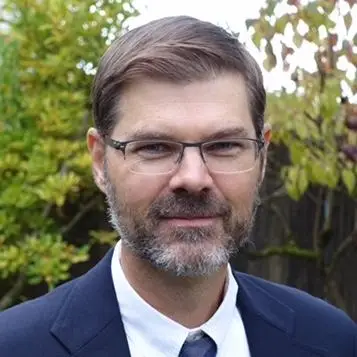As the new school year approaches, big-city superintendents everywhere confront the chasm between their students’ needs and their districts’ capacity to meet them. Many children will return to school a year or more behind.
Speaking in confidence, superintendents will tell you that the capacity of their teaching force to meet the moment is a grave concern. Before the pandemic struck, teacher skill was already their greatest challenge. Now many of their experienced teachers, exhausted by a brutal year, are leaving. It’s nearly August and hundreds of vacancies remain. Whoever applies, they confide, will get the job.
Closing learning gaps requires accelerating instruction. That in turn requires, first, that teachers adopt dramatically higher expectations of their students, and second, that they skillfully deploy sophisticated pedagogies that reliably enable students to meet these expectations. Few teachers are equipped to do either.
But we can find solutions.
It would be indecent to say that the pandemic created opportunities. But it did disrupt some long-standing constraints in K–12 education, spawning new approaches that may have promise.
One such constraint is that a school’s finest teachers reach only the 20 or 30 students within their four walls, rather than the hundreds of students—and teachers—who could benefit from their extraordinary craft. Plainly that never made sense.
We all know who these teachers are—they lead the rooms we want to linger in forever, rooms that crackle with intellectual excitement and joy. Year after year, all or nearly all students are found proficient on state exams and remain securely on the path to college and career. What if these teachers could inspire and equip hundreds of students and their teachers, if not thousands?
Last April, as schools closed everywhere, I had the great fortune to work with the gifted team of Doug McCurry, Chris Cerf, Mary Wells, Ian Rowe, and Savita Bharadwa. With the generous support of national education funders, we launched Cadence Learning(link is external), a new nonprofit initiative to ensure that students obtained high-quality, live instruction each day in English and math last summer. We recruited a team of expert, often award-winning teachers and invited them to serve as mentors to teachers across America in their grade and subject. Every day for five weeks, the mentor teachers recorded their lessons with real students, and posted them online along with their detailed lesson plans, slide decks, student-facing materials, and more.
In schools and districts across the country that partnered with Cadence last summer, teachers tapped these daily resources and worked in sustained collaboration with their mentors in their grade (3–8) and subject (English or math). Just days after their mentor taught the lesson, they taught it themselves. Every afternoon, in a national Zoom call, they met with their mentor in a “national grade team meeting” for an hour to prepare deeply for the upcoming lesson (“Intellectual Preparation”) and to debrief the last (“Student Work Analysis”).
One of the most stubborn challenges in American education is raising the expectations teachers hold for their students’ learning, especially in underserved communities. We have not yet discovered the ceiling on what students can know and do at each grade. There may be none. Yet exhorting teachers to raise these expectations doesn’t work, no matter how charismatic the preacher. But when teachers watch a mentor teacher—one they have come to know and admire—pitch his or her lessons sky-high and, by lesson’s end, reliably succeed with every child—well, that’s a transformative experience.
That’s what happens in the Cadence model. After watching their mentor in action, participating teachers are emboldened to hold the same expectations and discover that their students, too, can meet them. It might take time. Their first lesson might fail. But with time they discover that their students can do things they never before imagined possible.
Pedagogy and curriculum—and, I would add, professional development—are inextricable. Most PD fails not solely because it is dedicated to faddish ideas but because it is abstracted from the specific lessons being taught. In the Cadence model, teachers master advanced pedagogies like cognitively guided instruction in math—techniques that minimize teacher talk, keep the intellectual work on the child, welcome cognitive struggle, and build deep conceptual understanding—by watching their mentor teach the same lesson using precisely the same methods. It’s like sitting in the back of the class of the best teacher in the building. In the Zoom calls with their mentor, teachers anticipate likely student misconceptions in the lesson they’re about to teach. Their mentors share what worked and where they got tripped up—and how to avoid the same fate.
The mentor model, with professional development embedded in the daily curriculum and delivered virtually, offers an alternative to the notoriously ineffective cycle of teacher observation, feedback, and evaluation on which schools rely. In that model, the observing coach must possess three rare skills. She must be able to observe a deeply flawed class and identify from among all the failures the one change to target for improvement. She must have the rare influencing skills to induce the teacher, who is often accustomed to classroom autonomy, to engage the change. And lastly she must have the discipline to return to look for that change and then begin the cycle anew. The process is slow, laborious, and fraught. Through it all, the evaluative and supervisory relationship impedes trust. The mentor model, by contrast, is free of such threats. With all daily teaching resources provided alongside a vivid exemplar, it equips and inspires teachers for success.
To date, Cadence has touched nearly 40,000 students and a thousand teachers, across districts, charter networks, and parochial and independent schools, and in virtual, in-person, and hybrid settings. A rarity in education, the model is fully scalable; Cadence’s costs would change little if participation doubled.
Imagine if we put out a call to our nation’s best teachers to form a national corps of mentor teachers. Their charge: Work in partnership with classroom teachers in their grades and subjects to radically raise expectations and elevate their craft. Teaching and learning could be transformed.
In my next post, I’ll share some of Cadence’s early findings and what participants tell us about their experiences.





